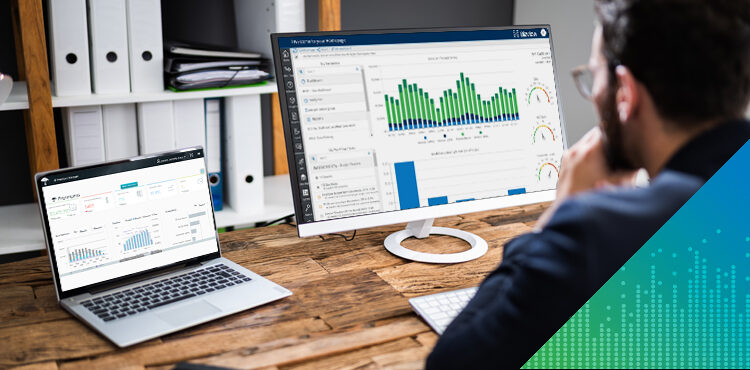5 Tops Benefits of Using a 3-Tier Architecture

To keep up with the pace of change required to deliver a compelling software product and to leverage emerging technologies, a microservices or three-tier architecture provides numerous benefits. It allows a developer the opportunity to extend, modularize, and be able to configure their application.
The architecture shortens time to market and reduces the cost to integrate new features into software as a service (SaaS), Cloud, and on-premise applications. It can also maximize user adoption through the flexibility it provides when integrating analytics into existing infrastructure and application workflows. Why is this is important?
What is a 3-Tier Architecture?
According to Techopedia, “3-tier architecture is a client-server architecture in which the functional process logic, data access, computer data storage and user interface are developed and maintained as independent modules on separate platforms.”
A “tier” in this case can also be referred to as a “layer”. The three tiers, or layers, involved include:
- A Presentation Layer that sends content to browsers in the form of HTML/JS/CSS. This might leverage frameworks like React, Angular, Ember, Aurora, etc.
- An Application Layer that uses an application server and processes the business logic for the application. This might be written in C#, Java, C++, Python, Ruby, etc.
- A Data Layer which is a database management system that provides access to application data. This could be MSSQL, MySQL, or PostgreSQL, etc.
As a simple example of 3-tier architecture, suppose you are looking to find movie times in your area using a web application. First, the presentation layer displays a web page with some fields for you to enter, like the date you want to view the movie and your zip code. This information is then passed to the application layer, which formats a query and passes it to the database layer. The database system runs the query and returns the results (a list of movies available within your geographic area) to the application layer, which formats it into a web page. The page is then sent back to the browser, where the presentation layer displays it on a laptop or other device.
Why 3-tier architecture is better than 2 tier?
Three-tier architecture is often considered superior to two-tier architecture due to its enhanced scalability, maintainability, and flexibility. In a three-tier setup, the application is divided into three distinct layers: the presentation layer (user interface), the application logic layer (business logic), and the data layer (database).
This separation of concerns allows each layer to be developed, updated, and scaled independently, improving overall system efficiency and reducing potential bottlenecks. For instance, changes to the user interface can be made without affecting the underlying business logic or data management, facilitating easier maintenance and upgrades.
Additionally, the three-tier model supports more robust security measures by isolating data access from the user interface, which can help protect sensitive information. Overall, this architecture provides a more modular approach, enabling better management of complex systems and supporting growth and change more effectively than a simpler two-tier model.
5 Top Benefits of Using a 3-Tier Architecture
1. Independent Technology Stack Updates
Benefit: Ability to update the technology stack of one tier without impacting other areas of the application.
- Each tier operates independently.
- Seamless updates and upgrades to specific technologies.
- No disruptions to the entire system.
2. Specialized Development Teams
Benefit: Allows different development teams to work on their areas of expertise.
- Developers can focus on their strengths.
- Higher quality development processes.
- More efficient development workflows.
3. Scalability
Benefit: Ability to scale the application both vertically and horizontally.
- Back-end tier can be deployed to various databases.
- System can be scaled by adding multiple web servers.
- Ensures the application can handle increased loads and grow as needed.
4. Enhanced Reliability
Benefit: Adds reliability and independence of underlying servers or services.
- Each tier can operate independently.
- Reduces the risk of a single point of failure.
- Increases overall reliability of the application.
5. Ease of Maintenance
Benefit: Simplifies maintenance of the code base.
- Manages presentation code and business logic separately.
- Changes to one layer do not impact the other.
- Easier to maintain and update the application.
A diagramed look at our platform’s 3-tier architecture:

With 3-tier architecture, you have the ability to utilize new technologies as they become available. This ensures your product is ready to adapt; ready for the future. You have the opportunity to redesign your product or application and actually look not only to today’s needs but into the future. Stay ahead of the game and maintain a competitive advantage.
We designed our platform around a 3-tier architecture with the future in mind. Learn more about our purpose-built embedded BI platform.
